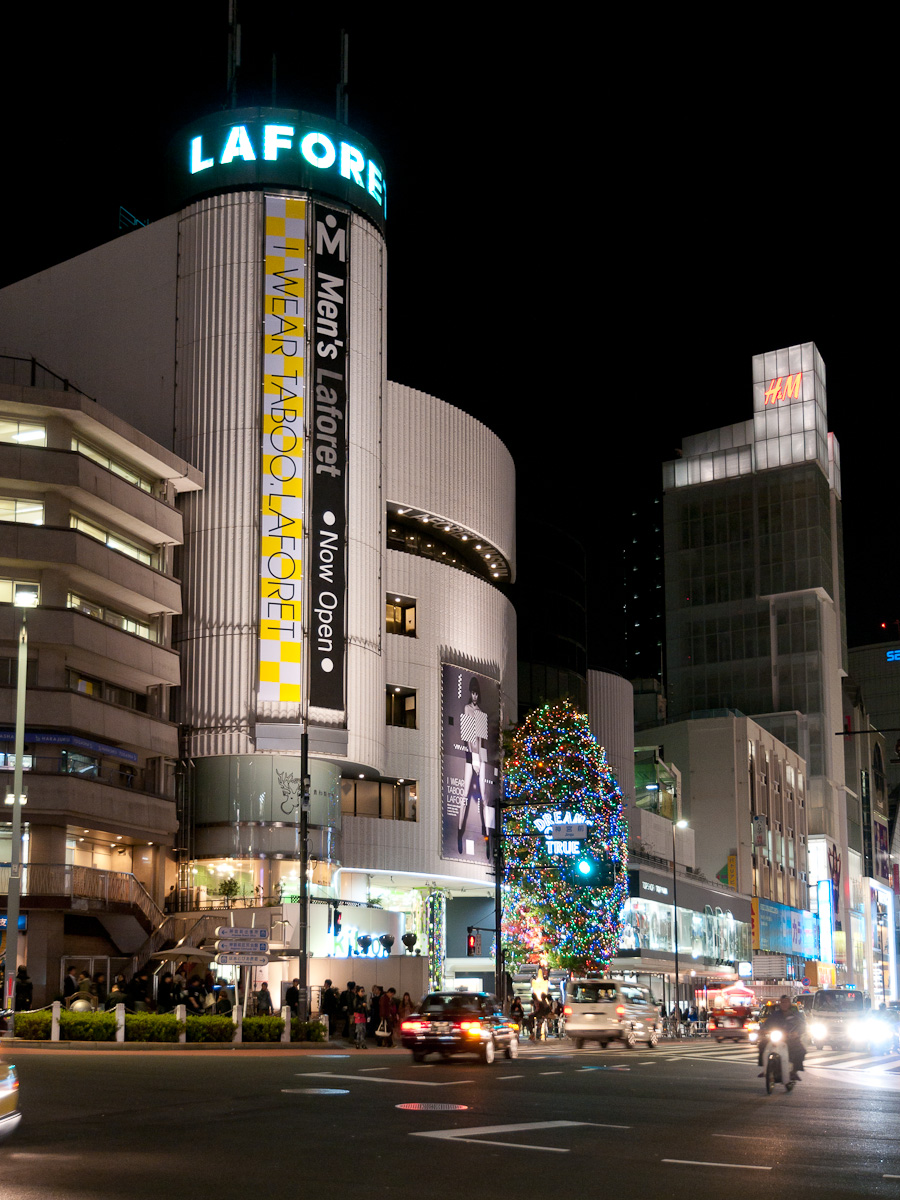Laforet on:
[Wikipedia]
[Google]
[Amazon]
 is a
is a
Laforet Official Site (Japanese with some English)
Laforet listed by Mori
Commercial buildings completed in 1978 Shopping malls established in 1978 1978 establishments in Japan Japanese fashion Department stores of Japan Museums in Tokyo Harajuku Mori Building
 is a
is a department store
A department store is a retail establishment offering a wide range of consumer goods in different areas of the store under one roof, each area ("department") specializing in a product category. In modern major cities, the department store mad ...
, residence, and museum
A museum is an institution dedicated to displaying or Preservation (library and archive), preserving culturally or scientifically significant objects. Many museums have exhibitions of these objects on public display, and some have private colle ...
complex located in the Harajuku
is a district in Shibuya, Tokyo. Harajuku is the common name given to a geographic area spreading from Harajuku Station to Omotesandō, Tokyo, Omotesando, corresponding on official maps of Shibuya, Tokyo, Shibuya ward as Jingūmae 1 Japanese a ...
commercial and entertainment district of the Shibuya
is a Special wards of Tokyo, special ward in Tokyo, Japan. A major commercial center, Shibuya houses one of the busiest railway stations in the world, Shibuya Station.
As of January 1, 2024, Shibuya Ward has an estimated population of 230,60 ...
neighborhood, in Tokyo
Tokyo, officially the Tokyo Metropolis, is the capital of Japan, capital and List of cities in Japan, most populous city in Japan. With a population of over 14 million in the city proper in 2023, it is List of largest cities, one of the most ...
, Japan
Japan is an island country in East Asia. Located in the Pacific Ocean off the northeast coast of the Asia, Asian mainland, it is bordered on the west by the Sea of Japan and extends from the Sea of Okhotsk in the north to the East China Sea ...
.
Constructed over part of the old Tokyo Central Church, a newer church located behind the store, Laforet was opened in 1978.
It was built by developer Mori Building
is a Japanese family-owned property management firm. As of 2015, its president and CEO is Shingo Tsuji. Its headquarters are in the Roppongi Hills Mori Tower in Roppongi, Minato, Tokyo, Minato, Tokyo.
Mori Building has been managing office bui ...
, that had developed several sites across Tokyo, as well as (subsequently) the Roppongi Hills Mori Tower
is a 54-story mixed-use skyscraper in Roppongi, Minato, Tokyo, Japan. Completed in 2003 and named after builder Minoru Mori, it is the centerpiece of the Roppongi Hills urban development. It is the sixth-tallest building in Tokyo at . The tow ...
, and at the time of opening it was one of the tallest buildings in Tokyo.
The name Mori, in Japanese, is the word for "forest" ( 森), and the name of the complex was a pun derived from that, it being simply the French words "la forêt" for "the forest".
The complex has six floors and two basements, divided into half levels; with 150 shops, and the Laforet Museum on the top floor.
It has had a long association with youth fashion culture, although this was not originally intended.
Although fashion brands such as Hysteric Glamour and Ba-tsu opened their first boutiques there, originally its interior was more staid and conventional for the times.
Unfortunately for its developers, this resulted in low sales in the first year of business, causing Ryotu Matsumoko of Ba-stu to be brought in to remodel the interior of the store, changing it to a more youthful and "edgy" design for the time, replacing long and deep stores with wide and shallow stores visible in "panopticon" fashion by shoppers from a central stairwell.
The same was true of its fashion promotion advertising image, originally designed by U.S. firm Antonio Lopez, which was not particularly successful until taken over by Takuya Onuki, who in the mid-1990s switched the advertising campaigns from female models wearing brand clothes to quirky images such as the "Nude" brand of Americans going about their daily business dressed only in underwear, and dogs in denim.
Following the increase in youth fashion culture of the times, Laforet took to partnering with youth fashion magazines and clothing brands to run fashion show
A fashion show is an event put on by a fashion designer to showcase their upcoming line of clothing and/or accessories during a fashion week. Fashion shows debut every season, particularly the spring/summer and fall/winter seasons. This is wh ...
s in the building during the 1980s and 1990s.
A victim of its own success, with the independent innovators that were originally attracted being acquired by and assimilated into commercial interests, Laforet's fashion shows went into decline in the late 1990s.
A new roster of boutiques began to turn its fortunes around in 2006.References
Cross-links
Sources
* * *External links
{{commonscat, Laforet HarajukuLaforet Official Site (Japanese with some English)
Laforet listed by Mori
Commercial buildings completed in 1978 Shopping malls established in 1978 1978 establishments in Japan Japanese fashion Department stores of Japan Museums in Tokyo Harajuku Mori Building